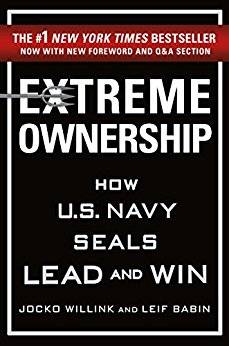

This article is an excerpt from the Shortform summary of "Extreme Ownership" by Jocko Willink and Leif Babin. Shortform has the world's best summaries of books you should be reading.
Like this article? Sign up for a free trial here .
Leaders set the tone and example for their teams, and as they navigate challenging situations leaders must constantly keep a careful balance of seemingly opposite forces. When a leader struggles or is ineffective, it is typically a sign that she has veered too far to either side of one of these dichotomies; in this way, a leader’s greatest strength can become her weakness if she doesn’t keep it balanced.
Here are the key dichotomies of leadership, from the book by Jocko Willink.
The 13 Dichotomies of Leadership
- Leaders need the confidence and competence to lead, but also the humility to follow. If a member of the team is better informed to make a decision or lead the team through a situation, a confident leader can put her ego aside and follow. This comes back to the concept we discussed in Chapter 4, which calls for leaders to put aside their egos and make the team’s success the highest priority.
- A leader who resists stepping aside to let a team member take charge often lacks confidence in herself and fears the prospect of a subordinate outperforming her.
- A leader who resists stepping aside to let a team member take charge often lacks confidence in herself and fears the prospect of a subordinate outperforming her.
- Leaders must be aggressive but not overbearing. On one hand, big risks can lead to big rewards. On the other hand, a leader needs to create an open environment where team members can approach her with any questions, concerns or disagreements; the leader should listen thoughtfully, discuss the plan and its purpose, and be open to adjusting her plan if need be.
- A leader has to balance remaining calm and showing emotion — whether it is anger, frustration, excitement, or sadness. As the head of her team, a leader needs to show that she has control of herself to reinforce her team’s confidence that she also has control of the situation. However, her team also needs to understand that she is human and genuinely cares about them and the mission; how can they be emotionally invested if their leader appears robotic?
- A leader needs to be confident but not cocky. Confidence allows a leader to act decisively, and gives everyone on her team confidence in the team’s mission. Cockiness, however, goes hand-in-hand with arrogance and undermines the diligence a leader needs to thoroughly check, question, and prepare for each mission. (The military transition team, or MiTT, in Chapter 6 showed cockiness as they headed into their operation, and they ended up facing a brutal reality check.)
- Leaders must be brave but not reckless. Leaders need to accept the fact that there will always be risk and uncertainty — and, as we discussed in Chapter 11, they must be able to be decisive despite that uncertainty — but they should mitigate every risk they can.
- In fact, the certainty that there will be unknowns and that some things are almost sure to go wrong is even more reason to minimize risks and create contingency plans whenever possible.
- In fact, the certainty that there will be unknowns and that some things are almost sure to go wrong is even more reason to minimize risks and create contingency plans whenever possible.
- Leaders need to be competitive but also able to lose graciously. Like a coach, a leader must push her team to do their best and constantly improve. But there will inevitably be times when that effort falls short, and a leader has to be able to deal with those losses and focus on how to do better next time. If unchecked, the ego behind one person’s or one department’s individual success and competitiveness can work against the goals of the entire organization (like when that creates internal competition that impedes collaboration, as in Eduardo and Nigel’s case in Chapter 11); instead, the team’s collective, long-term success must always be the top priority.
- A leader has to be detail-oriented without losing sight of the big picture. The leader can’t effectively direct her team if she doesn’t understand the specifics of an operation, but she doesn’t need to know every single detail because her job is to maintain perspective of the overall mission and goal. (This is a key aspect of implementing Decentralized Command, as we discussed in Chapter 8.)
- Leaders need to be physically and mentally strong, and also have endurance. Leadership requires a great deal of mental toughness to navigate through difficult situations and bear the responsibility of an entire team’s performance, and leaders must be careful not to wear themselves out in short spurts. Your team needs your sustained toughness and mental agility, so be sure to pace yourself (and your team) for long-term performance and success.
- Leaders must be humble but assertive. A leader needs to be able to check her ego (like we talked about in Chapter 4), take advice and criticism, and own up to her mistakes. But she also has to speak up — for herself, her team, and her decisions.
- A leader should have a close relationship with her team members, but never to the point of compromising her authority or the overall team’s success. Team members want to perform well for a leader who they feel cares about them, not only as employees but also as people. At the same time, team members can’t forget who’s in charge, nor should a leader’s relationship with any one person take priority over the whole team’s success.
- An effective leader practices Extreme Ownership, taking responsibility for the success and failures of team, while also implementing Decentralized Command by delegating and trusting team members with various duties. (Shortform example: A leader is like the captain of an old steamboat, who is responsible for steering the ship in the right direction and calling for faster or slower speeds. She can’t perform these tasks and simultaneously be shoveling coal in the bowels of the ship to power the engine.)…

———End of Preview———
Like what you just read? Read the rest of the world's best summary of "Extreme Ownership" at Shortform . Learn the book's critical concepts in 20 minutes or less .
Here's what you'll find in our full Extreme Ownership summary :
- What Extreme Ownership means, and why every responsible leader needs to get it
- How to get your team working smoothly together
- How leadership principles from Navy SEAL teams work in everyday business and life






